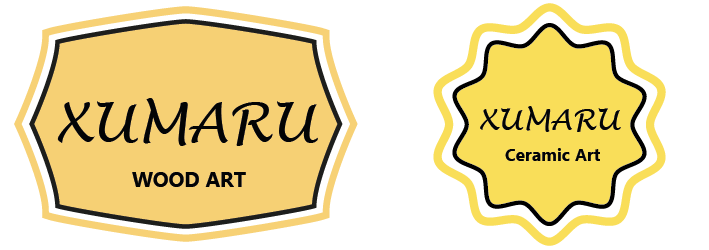Intarsia is a kind of wood art done by using different kinds of wood pieces, which have different natural colors and grains that fitted together like a mosaic to form 3D pictures and illustrations. Intarsia is, in a way, painting pictures by the natural colors and grains of wood.
It is thought that the Latin word "interserere" which means to insert, evolved into the word “Intarsia”. Another alternative for the origin of the word intarsia is that it has been derived from the Arabic tarsi’ (the act of inlaying, from the verb rassa’a – to inlay). It has emerged for the first time in Europe in Italy. Then it spread throughout Europe. Most beautiful samples have been created during the Renaissance period between 1400-1600 years. However Modern intarsia is a little bit different than ancient intarsia, it has a third dimension, depth.
The art is supposed to have an Oriental origin. Probably inlay and graving techniques used in the mosques and palaces in Damascus and Andalusia have been brought to Italy via Sicily or by Spanish Moors from North Africa. Although intarsia is seen as a technique derived from the Middle East’s mother-of-pearl and wood inlay, there is another art from Seljuk and Ottoman period called Kundekari which is not well-known in the Western world. It is an art of merging wood pieces in geometrical shapes without any adhesive or nail. A technique like a tongue-and-groove joint is used to fit the wood pieces together. Since it was very difficult to handle that kind of art, some craftsmen adapted Kundekari to make it simpler by using glue and nails.
In spite of the fact that there is a lot that can be said about the exact origin of the art intarsia, it is undeniable that this form of art has been a magnificent tool for artists to express themselves throughout different periods of time. Modern intarsia has evolved alongside different cultures and now contains various elements that represent them all. As Xumaru we are trying to provide you with beautiful examples of intarsia.
There are several steps for the implementation of intarsia:
- Deciding the picture or illustration that will be done. Usually an animal, a plant or some natural scenes.
- Drawing the pattern of the chosen picture or illustration with the segments that will be highlighted on a paper or computer.
- Transforming this pattern to a wooden medium (usually MDF or plywood) as a carcass that intarsia will be glued.
- Planning how many wood species will be used in order to show the whole picture with all necessary details. Although in the small projects several types of wood are used, complex projects need ten or more different wood types.
- After selecting wood species, cutting, forming, and sanding each piece of wood individually according to the segmentation of the pattern.
- Fitting all wood pieces which are carefully chosen depending on their colors, contrasts, and veining to the wooden carcass like a puzzle.
- After last controls, gluing them and cutting the board to the outline shape of the pattern.
- Finishing wood with natural oil or lacquer.
